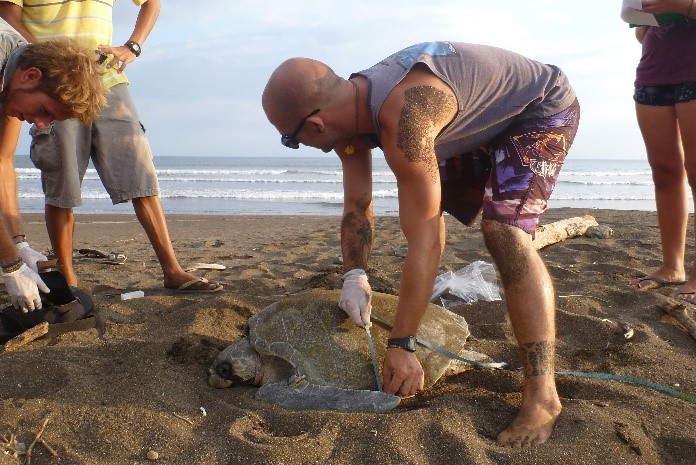

Ecological Challenges
One of the documented challenges in the sea turtle’s conservation is the looting of nests, along with the impacts of climate change (rising sea levels), which visibly affect the chances of hatchlings reaching adulthood. This is particularly concerning given that only a small percentage of hatchlings reach the first years of life.
To address this issue, FUNDECODES and the hotel sector has supported the construction of nurseries on different beaches. These beaches have permanent security, which allows for adequate protection of the nests, as well as carrying out effective monitoring of key nesting areas. This monitoring helps document high density nesting zones natural predation, looting and births in situ. Additionally, some females that nest on the beach have been tagged with metal plates for research purposes. On the other hand, these activities are linked to tourism activities, allowing hotel guests to enjoy the release of the turtles, generating an awareness process.
One of the key messages is the engagement of civil society actors, which allows to implement private investment mechanisms in biodiversity conservation and management. This experience demonstrates that the articulation and investment of private companies in biodiversity conservation management is possible, ensuring the protection and sustainability of vital ecosystem services
Hatcheries are a useful tool in in-situ sea turtle conservation, helping to protect nests that may be affected by poaching, natural predation and climate change impacts related to rising sea levels. They also play a crucial role in monitoring nesting success, tracking data such as number of eggs laid vs. hatched , arrival and hatching dates, becoming an effective mechanism for the conservation of these important species.
To safeguard vulnerable nests, a nursery was built on the beach following current regulations, especially for the protection of nests that needed to be protected ex situ due to the risk of anthropogenic activities. The nursery was located close to the hotels to benefit from permanent security. It has a rectangular shape, 50 m wide and 20 m long, and 1.9 m high to facilitate accessibility and management. The structure is light and up to 100 nests can be relocated in the space at a density of 1 nest per square meter. The clutches have codes that are listed in the logbook.